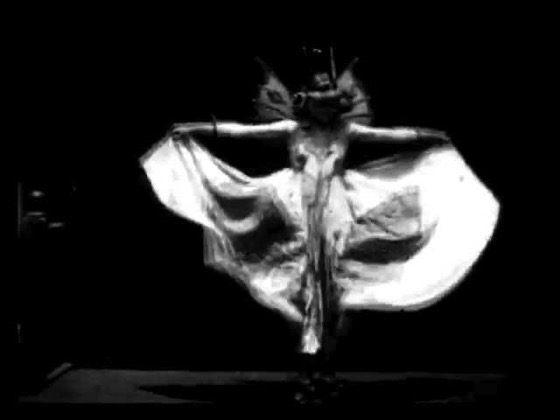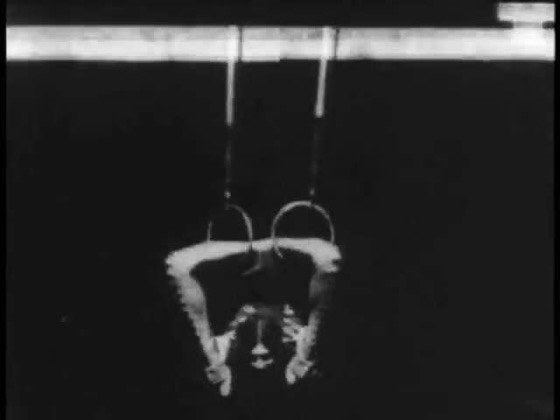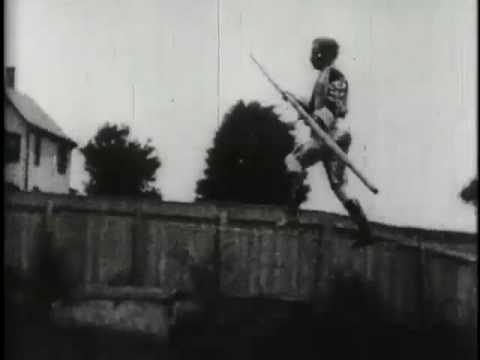I teach several classes for the Stephens College Low-Residency MFA in Screenwriting, including History of Screenwriting. In fact, I created the curriculum for that course from scratch and customized it to this particular MFA in that it covers ‘Screenwriting’ (not directors) and even more specifically, the class has a female-centric focus. As part History of Screenwriting I, the first course in the four-class series, we focus on the early women screenwriters of the silent film era who male historians have, for the most part, quietly forgotten in their books. In this series, I share with you some of the screenwriters and films that should be part of any screenwriters education. I believe that in order to become a great screenwriter, you need to understand the deep history of screenwriting and the amazing people who created the career. — Dr. Rosanne Welch
Buffalo Dance (W. K. L. Dickson, USA, 1894)
According to Edison film historian C. Musser, this film and others shot on the same day (see also Sioux ghost dance) featured Native American Indian dancers from Buffalo Bill’s Wild West show, and constitutes the American Indian’s first appearance before a motion picture camera.
CREATED/PUBLISHED
United States : Edison Manufacturing Co., [1894]
NOTES
Copyright: no reg.
Performers: Last Horse, Parts His Hair, Hair Coat.
Camera, William Heise.
Filmed September 24, 1894, in Edison’s Black Maria studio.
Sources used: Copyright catalog, motion pictures, 1894-1912; Musser, C. Edison motion pictures 1890-1900, 1997, p. 126.
Received: 5-13-1994; viewing print; preservation; Hendricks (Gordon) Collection.
SUBJECTS
Buffalo dance.
Indian dance–North America.
Dancers–United States.
Wild west shows–United States.
Dance
RELATED NAMES
Dickson, W. K.-L. (William Kennedy-Laurie), 1860-1935, production.
Heise, William, camera.
Last Horse, performer.
Parts His Hair, performer.
Hair Coat, performer.
Thomas A. Edison, Inc.
Hendricks (Gordon) Collection (Library of Congress)
DIGITAL ID
edmp.4025 http://hdl.loc.gov/loc.mbrsmi/edmp.4025
Learn more about Thomas Edison and Early Movies with these books and videos
* A portion of each sale from Amazon.com directly supports our blogs
** Many of these books may be available from your local library. Check it out!




![The Monkees as Cultural Touchstone from Why The Monkees Matter Book Signing, Book Soup, Hollywood [Video] (1:04)](https://rosannewelch.com/wp-content/uploads/2017/03/wtmm-reading-03-culture.jpeg)

![Harry Potter and What To Leave Out from A History of the Art of Adaptation [Video] (1:02)](https://rosannewelch.com/wp-content/uploads/2017/03/adapt-42-harry-potter-leave-out.jpeg)

![Harry Potter and Theme from A History of the Art of Adaptation [Video] (0:55)](https://rosannewelch.com/wp-content/uploads/2017/03/adapt-41-harry-potter-theme.jpeg)

![How It All Began from Why The Monkees Matter Book Signing, Book Soup, Hollywood [Video] (1:07)](https://rosannewelch.com/wp-content/uploads/2017/03/wtmm-reading-02-beginnings.jpeg)
![Adapting Harry Potter from A History of the Art of Adaptation [Video] (0:35)](https://rosannewelch.com/wp-content/uploads/2017/03/adapt-40-harry-potter-1.jpeg)

